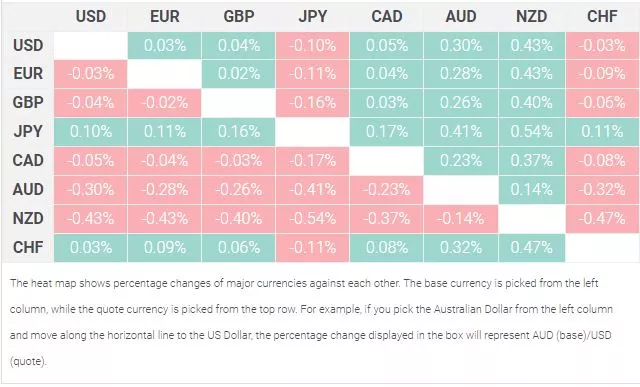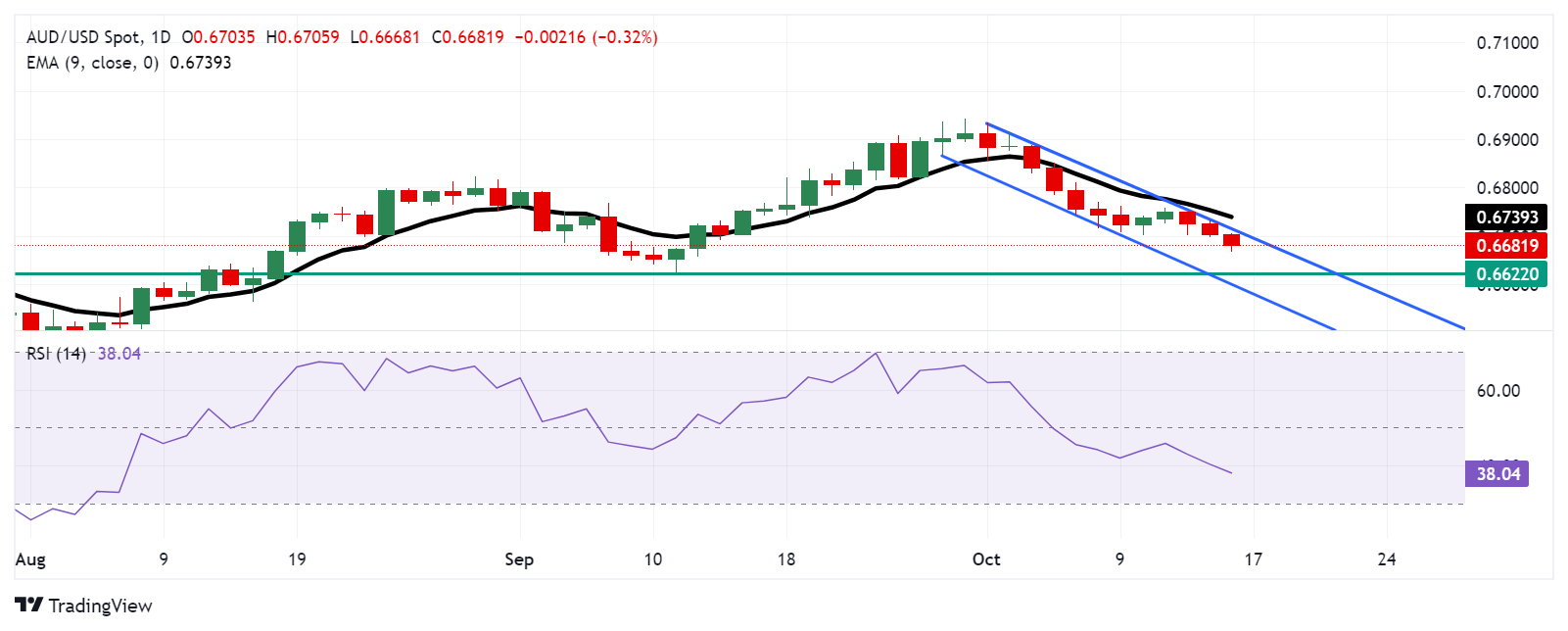Australian Dollar Continues To Lose Ground Despite Hawkish Remarks From RBA Hunter
Image Source: Unsplash
- The Australian Dollar extends its losing streak due to economic woes in China.
- RBA’s Hunter indicated that although inflation expectations remain anchored, persistent price growth continues to present challenges for the central bank.
- The US Dollar appreciates as strong jobs and inflation data have reduced the odds for aggressive easing by the Fed.
The Australian Dollar (AUD) extends its losing streak for the third consecutive day against the US Dollar (USD) on Wednesday, despite hawkish comments from Reserve Bank of Australia (RBA) Deputy Governor Sarah Hunter.
RBA’s Hunter reaffirmed the Australian central bank’s commitment to controlling inflation, noting that while inflation expectations remain anchored, persistent price growth continues to pose challenges.
The Aussie Dollar is facing downward pressure due to economic uncertainty in its largest trading partner, China. Furthermore, China's recently announced fiscal stimulus plan did little to lift market sentiment, as investors remain uncertain about the scale and impact of the package.
The US Dollar (USD) continues to gain support as robust jobs and Consumer Price Index (CPI) data have dampened expectations of aggressive Federal Reserve (Fed) easing. Markets are now anticipating a total of 125 basis points in rate cuts over the next 12 months.
Daily Digest Market Movers: Australian Dollar struggles due to economic uncertainty in China
- According to the CME FedWatch Tool, there is currently a 94.1% probability of a 25-basis-point rate cut in November, with no expectation of a larger 50-basis-point reduction.
- The Westpac Leading Index in Australia remained unchanged in September on a month-over-month basis, marking the sixth consecutive month of stagnation.
- On Tuesday, Federal Reserve Bank of Atlanta President Raphael Bostic stated that he anticipates just one more interest rate cut of 25 basis points this year, as reflected in his projections during last month's US central bank meeting. "The median forecast was for 50 basis points beyond the 50 basis points already implemented in September. My projection was for an additional 25 basis points," he said, according to Reuters.
- The Australian weekly survey of Consumer Confidence showed little movement, with the ANZ-Roy Morgan Consumer Confidence index remaining steady at 83.4 this week. Despite the unchanged figure, the longer-term trend shows that Consumer Confidence has been below the 85.0 mark for a record 89 consecutive weeks. The current reading is 1.3 points higher than the 2024 weekly average of 82.1.
- Federal Reserve (Fed) Bank of Minneapolis President Neel Kashkari reassured markets late on Monday by reaffirming the Fed's data-dependent approach. Kashkari reiterated familiar Fed policymaker views on the strength of the US economy, noting continued easing of inflationary pressures and a robust labor market, despite a recent uptick in the overall unemployment rate, per Reuters.
- The AUD might have received downward pressure from a detailed note from the Commonwealth Bank of Australia indicating expectations that the Reserve Bank of Australia (RBA) will implement a 25 basis point rate cut by the end of 2024. The report suggested that a stronger disinflationary trend than the RBA anticipates is essential for the Board to consider easing policy within this calendar year.
- China's military initiated drills on Monday in the Taiwan Strait and around Taiwan. A spokesperson for the US Department of State expressed serious concern regarding the People's Liberation Army's (PLA) military actions. In response, Taiwan's Defense Ministry stated, “We will not escalate conflict in our response.”
- The National Bureau of Statistics of China reported that the country's monthly Consumer Price Index (CPI) remained unchanged at 0% in September, down from August's 0.4% increase. The annual inflation rate rose by 0.4%, falling short of the anticipated 0.6%. Additionally, the Producer Price Index (PPI) decreased by 2.8% year-on-year, a larger drop than the previous decline of 1.8% and exceeding expectations of a 2.5% decrease.
Technical Analysis: Australian Dollar moves below 0.6700; 14-day RSI reinforces the ongoing bearish bias
The AUD/USD pair hovers around 0.6680 on Wednesday. Technical analysis of the daily chart indicates that the pair is moving downward along the upper boundary of a descending channel, signaling a bearish bias. The 14-day Relative Strength Index (RSI) also remains below the 50 level, reinforcing the ongoing bearish momentum.
On the downside, the AUD/USD pair may target its eight-week low of 0.6622, last seen on September 11. A break below this level could open the pair's door to test the descending channel's lower boundary near the psychological support level of 0.6600.
In terms of resistance, if the pair breaks above the upper boundary of the descending channel at 0.6720 level, it may face an initial barrier at the nine-day Exponential Moving Average (EMA) around 0.6738, followed by the key psychological resistance at 0.6800.
AUD/USD: Daily Chart
Australian Dollar PRICE Today
The table below shows the percentage change of Australian Dollar (AUD) against listed major currencies today. Australian Dollar was the weakest against the Japanese Yen.

More By This Author:
GBP/USD Remains Below 1.3050 Following UK Labor DataUSD/CAD Price Forecast: Moves Above 1.3800 Ahead Of Upper Boundary Of Ascending Channel
EUR/GBP Falls Below 0.8400 Due To Rising Likelihood Of A Rate Cut By ECB
Disclosure: Information on this article contains forward-looking statements that involve risks and uncertainties. Markets and instruments profiled on this page are for informational purposes ...
more




